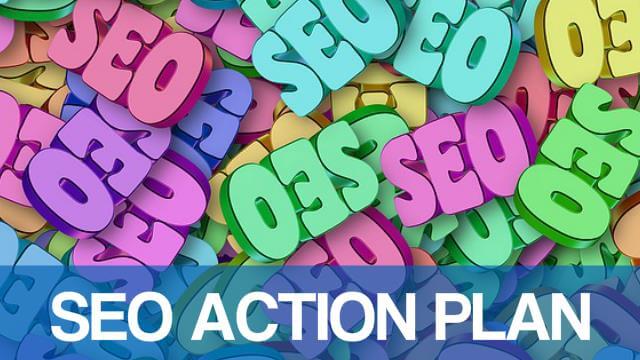Here are the 10 steps we are going to do to create a comprehensive SEO Action Plan.
Every page and focus keyword needs an Action Plan.
1. Create a Plan / Set Goals
– What are the goals for your website, website pages and SEO.
What is the purpose of your website and what marketing objectives do you want to achieve.
Here are some examples:
1. Increase Search Rankings
2. Get More Qualified Leads
3. Build Brand Awareness, Authority and Trust
4. Increase Sales
5. Increase Conversions
6. Expand Your Market
2. Build a Sitemap / Outline your website in excel (or Google Docs)
– Create a Sitemap Based on Your Focus Keywords
Outline your website before building.
You can spend a lot of time creating unnecessary pages, or designing sites that are more complicated
than they need to be.
Create an outline your website’s content and figure out what’s necessary, how pages are interrelated,
and what can be cut from your website, before you start building.
Here’s what you do by outlining your website before you building it.
1. Clarify the purpose and goals for your website.
2. Identify and build your conversion funnel.
3. Create the outline for your website’s structure and architecture.
3. Focus Keyword Research
– How to do basic and advanced keyword research.
People search for solutions. Be sure your page offers the solution your visitors are
looking for.
Here are some examples of keywords (search queries) looking for solutions:
1. Keyword search: kayak day trip
Result: visitor booked a day long outing for their family with a local kayak rental business – $190
2. Keyword search: best pizza near me
Result: visitor took family out for pizza – $58
4. Competitor Research
– How to do Competitor Research: Top 5 Metrics in 5 Minutes.
Your best keywords are the keywords you where you can rank #1 on Google. The website currently in Position #1 for that keyword is your competitor.
You need to be sure your website can compete with that #1 website. If not, you need to modify your
keyword until you find the right combination of relevance, cost, search volume and competition.
You need to research the websites in Position #1, #2 and #3 for your keyword and choose the keyword
where you can compete with the top 3 results.
5. Onsite Optimization
– Talk to the Search Engines in their own language.
Onsite optimization is creating website pages, titles, tags, content, navigation and overall structure to be
optimized for your target keywords
1.Keywords in Metatags / Onpage SEO Elements / Content / Navigation
2.Keywords in Navigation
Your navigation and menus are a keyword outline of your website.
6. Offsite Optimization
– More important than onsite optimization.
Offsite optimization creates links back to your website from other websites, social media and directories.
7. Backlinks
– Backlinks are the most important offsite element of SEO.
Backlinks are the most important element of offsite optimization. Backlinks are difficult but well worth the
effort. Good backlinks will double the value of your content.
8. Content Content Content
– Content is the most important onsite element of SEO.
Content is the most important onsite element of SEO. Google looks for unique, new and comprehensive
content in your niche. One great piece of content is worth more than 10 pieces poor content.
9. Tracking
– Adjust, refine and perfect your SEO.
Tracking your results will tell you where you are successful and where you need to more work. By looking at what has working (and not worked) you can save time and money going forward.
10. Adjust marketing plan.
– Adjust your marketing plan based on the metrics from tracking.
Let the data drive your marketing plan.
There’s a lot of data available – probably too much. Google Analytics, Google Search Console, Social
Media analytics, demographics, KPI’s – a lot to process.
Decide what’s important to your marketing plan, monitor that information and adjust course based on
what you see is actually happening.
Monitor what’s important:
1. Who are your target demographic and are they buying from you.
2. How did they find you? Do you have strong marketing in those channels (email, social etc)
3. What did they do when they found you? Did they buy, are they engaged, did they come back?


